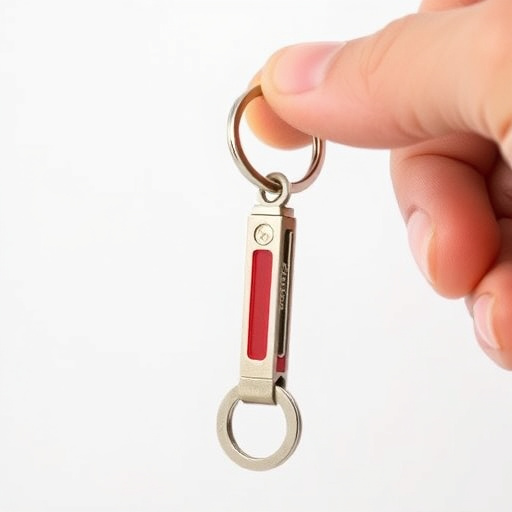Developing an effective defensive keychain requires understanding and mastering the Proper Keychain Striking Form Technique, aligning wrist and forearm for control, minimizing injury risk, and enhancing self-defense capabilities. Designing a quality keychain balances material (like durable metal) with ergonomic grip and natural movement promotion. Consistent practice is key to internalizing this technique, enabling precise control and swift strikes. Advanced grips, leveraging wrist and forearm muscles, cater to diverse needs, making your keychain versatile for tight spaces or complex locks.
In the world of self-defense, a well-designed keychain can be a game changer. This article delves into the art and science of metal defense keychain grip design, focusing on proper striking form technique. We’ll explore key components for optimal design, refine your technique for consistent and effective performance, and introduce advanced grip techniques to enhance versatility and power. Understanding these dynamics is crucial for turning your keychain into a functional self-defense tool with precise and impactful strikes.
- Understanding Keychain Grip Dynamics: The Basics of Striking Form
- Key Components for Optimal Defense Keychain Design
- Refining Your Technique: Tips for Consistent and Effective Performance
- Advanced Grip Techniques: Enhancing Your Keychain's Versatility and Power
Understanding Keychain Grip Dynamics: The Basics of Striking Form
Understanding the dynamics of keychain grip is key to designing an effective and comfortable defensive tool. The basic principle revolves around mastering the art of striking form, which forms the foundation for a secure and precise hold on the keychain. When it comes to defense, adopting the right posture and hand placement is crucial.
The proper keychain striking form technique involves aligning your wrist and forearm in a natural, relaxed position, ensuring they work in harmony during the grip. This technique allows for better control and reduces the risk of injury, enabling users to employ their keychain as a reliable self-defense mechanism with confidence.
Key Components for Optimal Defense Keychain Design
When designing a defense keychain, understanding and incorporating key components is essential for optimal performance. The proper keychain striking form technique is fundamental. This involves a smooth, swift motion that leverages the user’s wrist and forearm muscles to deliver a powerful strike. A well-designed keychain should promote this natural movement, ensuring control and accuracy during use.
Additionally, consider the materials and construction. High-quality metal ensures durability and provides the necessary weight for a solid impact. The keychain’s grip should be ergonomically designed, allowing for a secure hold even under stress. Balancing these elements—form, function, and material—is crucial to crafting an effective defense keychain that users can rely on in critical situations.
Refining Your Technique: Tips for Consistent and Effective Performance
Mastering the art of keychain defense requires consistent practice and a refined technique. The key to successful performances lies in understanding the proper striking form. When gripping a metal defense keychain, ensure your hand is positioned comfortably with fingers slightly bent and close to the surface. This allows for precise control during strikes.
Focus on smooth and calculated movements. Practice swinging your arm in controlled arcs, keeping your elbow close to your body. Aim for consistent speed and power, striking targets with precision. Regular training sessions will help internalize the correct technique, making your defense swift and effective.
Advanced Grip Techniques: Enhancing Your Keychain's Versatility and Power
Incorporating advanced grip techniques into your keychain design can significantly enhance its versatility and overall power. Beyond the basic gripping methods, learning and mastering specific striking form techniques allow for a wider range of applications. For instance, understanding the proper keychain striking form technique enables users to leverage their wrist and forearm muscles effectively during impact, increasing both control and force transmission. This precision can be crucial when opening tight spaces or navigating challenging lock mechanisms.
These advanced grip strategies also cater to various user preferences and task requirements. By teaching users how to adjust their grip for different scenarios, you empower them to adapt your keychain to unique situations. Whether it’s a narrow gap that demands a precise, angled strike or a tough lock needing extra torque, the ability to modify grip and striking form unlocks new possibilities, making your keychain a more dynamic tool in any user’s possession.
Incorporating the right keychain grip design, honed through understanding key dynamics and refining your technique, is a game-changer for self-defense. By mastering the basics of striking form and exploring advanced techniques, you enhance both the versatility and power of your defense keychain. Remember, the proper keychain striking technique is crucial for consistent and effective performance in any situation. With these tips in hand, you’re now equipped to navigate the labyrinthine path towards becoming a keychain combat expert.
